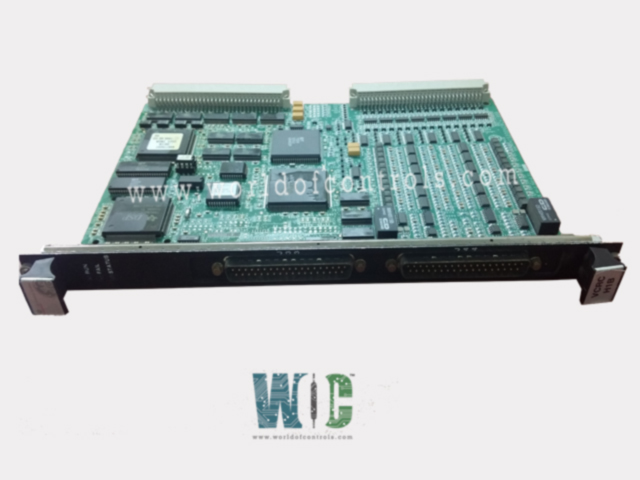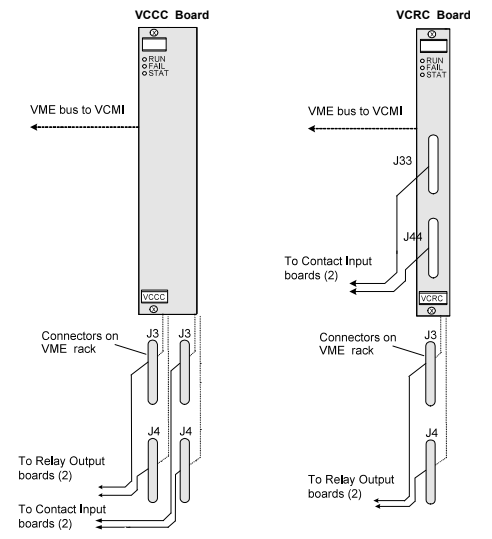
World Of Controls understands the criticality of your requirement and works towards reducing the lead time as much as possible.
IS200VCRCH1B - Contact Input/Relay Output Board is available in stock which ships the same day.
IS200VCRCH1B - Contact Input/Relay Output Board comes in UNUSED as well as REBUILT condition.
To avail our best deals for IS200VCRCH1B - Contact Input/Relay Output Board, contact us and we will get back to you within 24 hours.
Part Number: IS200VCRCH1B
Manufacturer: General Electric
Series: Mark VI
Number of Channels: 48 Dry Contact Voltage Input Channels
Product Type: I/O Board
Input Isolation: 1500 V
Availability: In Stock
Country of Origin: USA
IS200VCRCH1B is a Contact Input/Relay Output Board manufactured by General Electric as part of the Mark VI series used in gas turbine control systems. The Contact Input/Relay Output Board accepts 48 discrete inputs and manages 24 relay outputs from a total of four-terminal boards through its accompanying daughterboard. The double-width VCCC module fits in the VME I/O rack. Two sets of J3/J4 connections are provided in this rack for cabling to the TBCI and TRLY terminal boards. In place of the VCCC, the VCRC is a narrower board that can be used.

Fig 1: VCCC and VCRC Boards and Cable Connections
A contact input terminal board (TBCI) is wired for the first 24 dry contact inputs; a second terminal board is needed for inputs 25–48. The contacts are given dc power. The terminal board is linked to the VME rack housing the VCCC processor board by cables with molded plugs. For inputs monitoring crucial turbine variables, high-speed scanning and recording at 1 ms per second are available. Contact chatter and pulse widths down to 6 ms are reported by the sequence of events (SOE) recorder, together with all contact openings and closures with a temporal resolution of 1 ms.
Twelve plug-in magnetic relays are stored in TRLYH1B. Jumpers can be used to set up the first six relay circuits for either driving external solenoids or dry, Form-C contact outputs. For field solenoid power, a standard 125 V dc or 115 V ac source, as well as an optional 24 V dc source, can be offered with individual jumper selectable fuses and onboard suppression. The subsequent five relays (7–11) have separated Form-C contacts that are not powered. An isolated Form-C contact is used on output 12 for particular applications like ignition transformers.
The VCRC board is functionally equivalent to the VCCC board, however, it only requires one VME slot because no daughter board is needed. The TBCI boards' contact inputs are received by two front panel connections, J33 and J44. Similar to VCCC, relay outputs on TRLY connect to the J3 and J4 ports on the VME rack. VCCC can be used in place of cable placement on the front panel if it is undesirable.
WOC has the largest stock of GE Speedtronic Mark VI control spares. We can repair your faulty boards. WORLD OF CONTROLS can also supply unused and rebuilt backed up with a warranty. Our team of experts is available round the clock to support your OEM needs. Our team of experts at WOC is happy to assist you with any of your automation requirements. For pricing and availability on any parts and repairs, kindly get in touch with our team by phone or email.
Why are monitoring and speed control required in a turbine?
Heat is generated in an atomic power station by nuclear fusion, water is heated and steam is generated to power the turbine. To maintain the frequency F, it is necessary to keep a constant speed of 1500 RPM. The home setup is affected by changes in frequency.
What does a printed circuit board PCB do?
A printed circuit board, or PCB, is a device that uses conductive paths, tracks, or signal lines etched from copper sheets laminated onto a non-conductive substrate to mechanically support and electrically connect electronic components.
What is an analog output module in PLC?
Output Module for PLC. PLC analog outputs, which are extensively used in industrial applications to operate actuators, valves, and motors, use typical analog output ranges such as 5 V, 10 V, 0 V to 5 V, 0 V to 10 V, 4 to 20 mA, or 0 to 20 mA.
Where to Buy a Printed Circuit Board?
At our store, we provide a variety of Printed Circuit boards. Please contact us if you have any questions, and our team will be pleased to assist you.